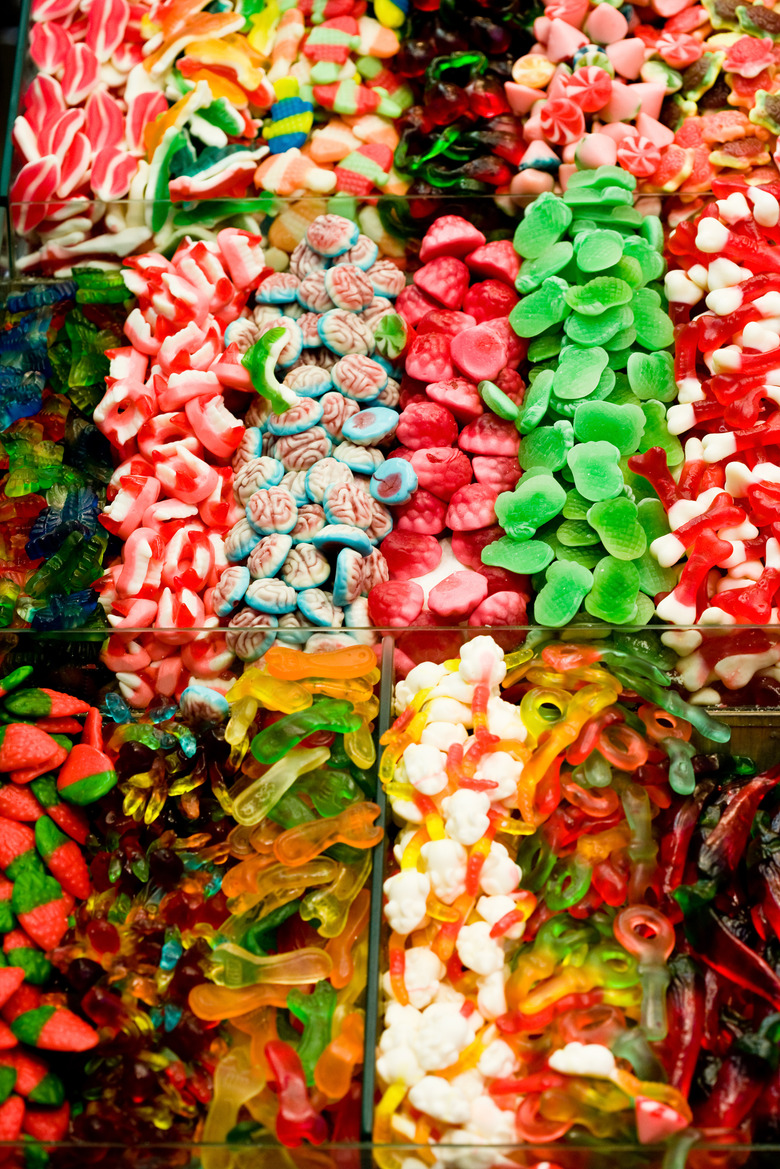How To Make A 3D Poster Of The Cell Cycle
Demonstrating the cell cycle on a 3D poster is a fun and simple project, no matter to what age group you will present the poster. All the supplies you will need can be found in your local superstore or grocery store without costing too much. Some of the supplies are edible, which means that this poster should be constructed within a day or two of the presentation. This poster involves hot glue, so you'll have to leave some extra time for drying and setting in between steps.
Step 1
Print out or write out the labels for the stages of the cell cycle. These labels are interphase, prophase, metaphase, anaphase, telophase and mitosis. Make sure that the labels are large enough to be read from a distance for your presentation.
Step 2
Divide your posterboard into six segments using a marker. Glue one of the headings at the top of each section. Underneath the headings in interphase, prophase, metaphase and anaphase, draw one large circle to represent the cell. Underneath the heading in telophase, draw a horizontal peanut shape to demonstrate the cell beginning to divide. In the mitosis section, draw two separate circles for the two new cells.
Step 3
Glue one M&M or Skittle to the middle of each gummy worm. This will serve as the chromosomes in your poster. Allow them to dry completely before using.
Step 4
Cut the six bouncy balls in half with a sharp knife. Be very careful, since bouncy balls can be difficult to hold steady. Glue six strings of yarn in an arch around the edges of each of the bouncy balls. These will serve as the centrosomes and mitotic spindles.
Step 5
In each of the six sections, glue four chromosomes and two centrosomes with mitotic spindles in the correct arrangements to demonstrate the cell's gradual division. Use extra yarn when necessary to connect the different chromosomes and centrosomes. Consult your textbook or class notes to make the correct images for each stage of the cell cycle.
Things Needed
- Large Poster Board
- Yarn
- Knife
- 6 Bouncy Balls
- 24 Gummy worms
- 24 M&M's or Skittles
- Hot Glue
Warning
An adult should help with the cutting of the bouncy balls and in using a hot glue gun, to avoid accidental cuts or burns.
References
- "The Cell: Evolution of the First Organism;" Joseph Panno; 2005.
Cite This Article
MLA
Wall, Kelly. "How To Make A 3D Poster Of The Cell Cycle" sciencing.com, https://www.sciencing.com/make-3d-poster-cell-cycle-10046928/. 24 April 2017.
APA
Wall, Kelly. (2017, April 24). How To Make A 3D Poster Of The Cell Cycle. sciencing.com. Retrieved from https://www.sciencing.com/make-3d-poster-cell-cycle-10046928/
Chicago
Wall, Kelly. How To Make A 3D Poster Of The Cell Cycle last modified March 24, 2022. https://www.sciencing.com/make-3d-poster-cell-cycle-10046928/
